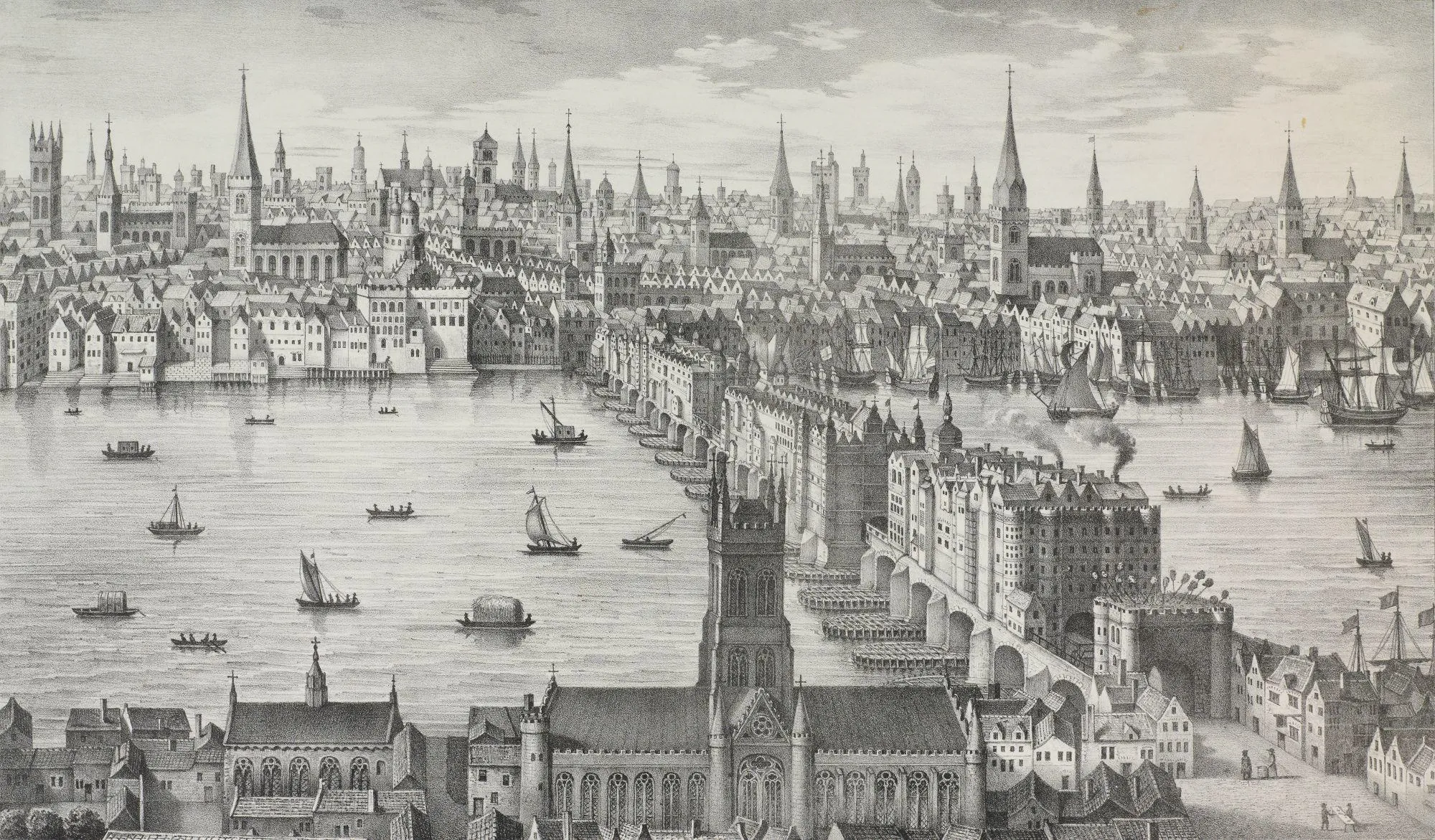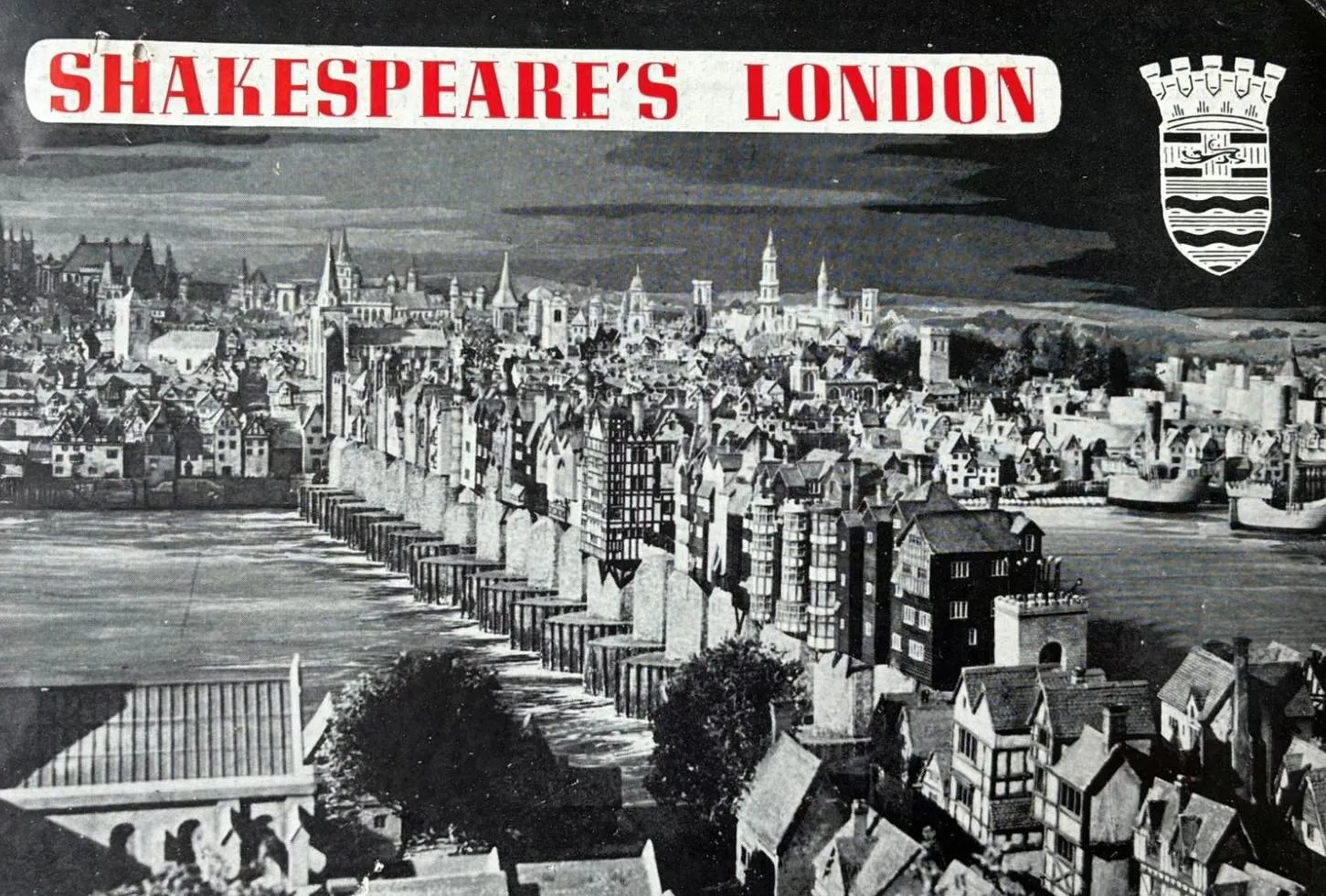Henry V
In this article we examine documents held at The London Archives that reveal a surprising connection between the 1944 film ‘Henry V’ and the London County Council (LCC).
Wartime cinema
On 22 November 1944 the film, Henry V, directed by and starring Laurence Olivier was released in cinemas. Partly funded by the government this was intended to boost morale but also acted as patriotic propaganda.
The use of Technicolor enhanced the scenes of pageantry and was one of the earliest films of Shakespeare’s plays to be shot in colour. The combination of theatrical and cinematic elements was a cutting-edge technique at the time.
The opening scene of the film shows London in 1600 using a model of what was referred to as ‘Shakespeare’s London’ in a later exhibition of it at County Hall. We are transported to a production of Henry V at the Globe Theatre for around 45 minutes of the film before it transitions to a full-scale representation of the Battle of Agincourt with real and not staged exteriors. At its close, we return to the Globe for the final scenes and then to the model of London.

Film as propaganda
The title caption read: ‘To the Commandos and Airborne Troops of Great Britain – the spirit of whose ancestors it has been humbly attempted to recapture in some ensuing scenes – this picture is dedicated.’
Significant sections of Shakespeare’s text were cut so that the Battle of Agincourt could have more of a focus. Any references to Scotland as a separate kingdom were also cut to remain united in the face of war and side-step any ideas of dissent.
Being released in the autumn of 1944, the film showing an English army crossing the Channel was an obvious parallel to the recent D-Day landings. The symbolism of stopping an enemy abruptly by the determined ‘few’ resonates in the lines:
We few, we happy few, we band of brothers/For he today that sheds his blood with me shall be my brother
The model of Shakespeare's London
A file from the London County Council General Purposes Committee, LCC/CL/GP/01/246, confirms the gift of the model for the exhibition ‘Shakespeare’s London’ by Two Cities Films (Denham Studios) to the Council. It was displayed at County Hall for members of the public during November 1944. Photographs of the exhibition were printed in the Illustrated London News periodical that year.
Denham Studios were based in the village of Denham in Buckinghamshire and built by London Film Productions in 1936. They were the most advanced film production facility during this period. The film studios closed in 1951.
Further details become apparent in this fascinating file such as the sheer size of the model which was 70 by 50 feet! There is mention of the material used to make it which included – plaster of Paris, cardboard, wood, linoleum, and asbestos which was already disintegrating! The use of asbestos is no doubt concerning to modern readers, knowing the dangers to health that it can cause.
The model took nearly a year to complete and cost several thousand pounds. There were certain sections, at the back of the individual houses within the model, that were not painted as they were not to be seen on the screen.
The exhibition at County Hall
...the Civil Defence and General Purposes Committee on 15th May, 1944, decided to accept the gift of a large-scale model of Old London, which is now being set up in the Conference Hall for exhibition…
The accuracy of the model was important, and it was largely based on Visscher’s map view of London.

There is a particularly fine reproduction of old London Bridge and south of the river Southwark Cathedral, buildings are constructed to scale and appropriately coloured. There are also groups of people also to scale and in contemporary costume. The model is in sections and some idea of its size can be gained by the fact that it will fill about half of the conference hall.

The Architect has given instructions for the brochure to mention the London before the Great Fire, the attempts at planning after the Fire, Wren’s plan, the growth of London, and the present attempts to plan the South Bank. He wants to ride his hobby horses! I doubt if the brochure could be used for educational purposes.
In the LCC file it references that the “model was lent out on various occasions and finally disintegrated”. There had been a plan to give this to the Education department and put it on display at the Horniman Museum, but we could find no evidence that this ever happened.
The Queen and the Princess Elizabeth...proceeded to the Committee Rooms where some 25 women of the Civil Defence services were presented to Her Majesty. Before leaving the County Hall, The Queen and The Princess Elizabeth were shown the model of "Shakespeare's London" exhibited in the Conference Hall.
Further resources
- SC/PHL/02/1274 - photographs of model of London used in the film Henry V exhibited at County Hall 1946
- LCC/CL/GP/01/246 - Gift to the Council of model of Shakespeare's London, built for the film "Henry V" by Two Cities Films at Denham Studios 1944–1946
- Illustrated London News Nov 11, 1944 – Shakespeare’s London model at County Hall
- LCC Minutes of Proceedings, 24 October 1944, mentions the exhibition at County Hall
Exhibition and display
Visit our current exhibition London in the Second World War which is on until 19 February 2026.
London in the Second World War exhibitionDon't miss rarely displayed treasures relating to William Shakespeare on show at The London Archives for a limited time only until 2 October 2025. These include a title deed from 1613 showing how Shakespeare bought a property in Blackfriars in the City of London – a document that is one of only six in the world that contains his signature!
Also on display is our Civitas Londinum map which is one of the earliest representations of London.